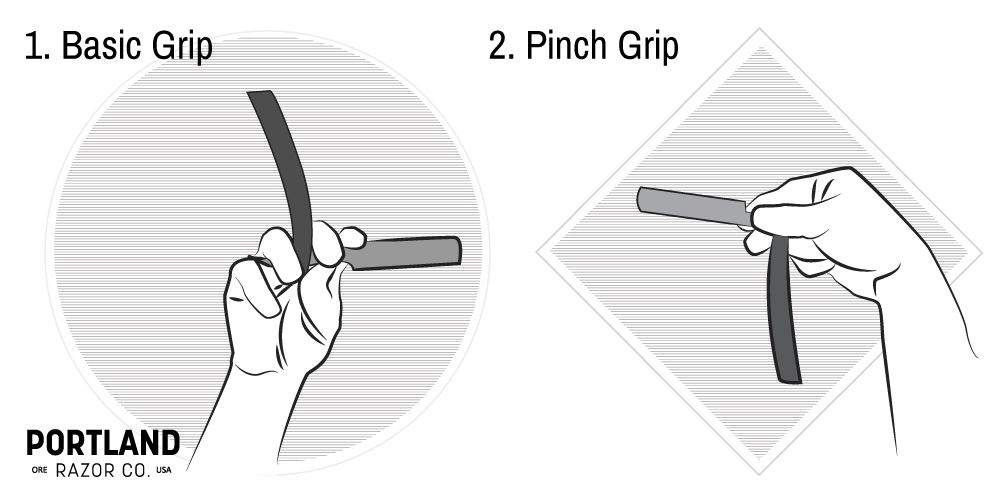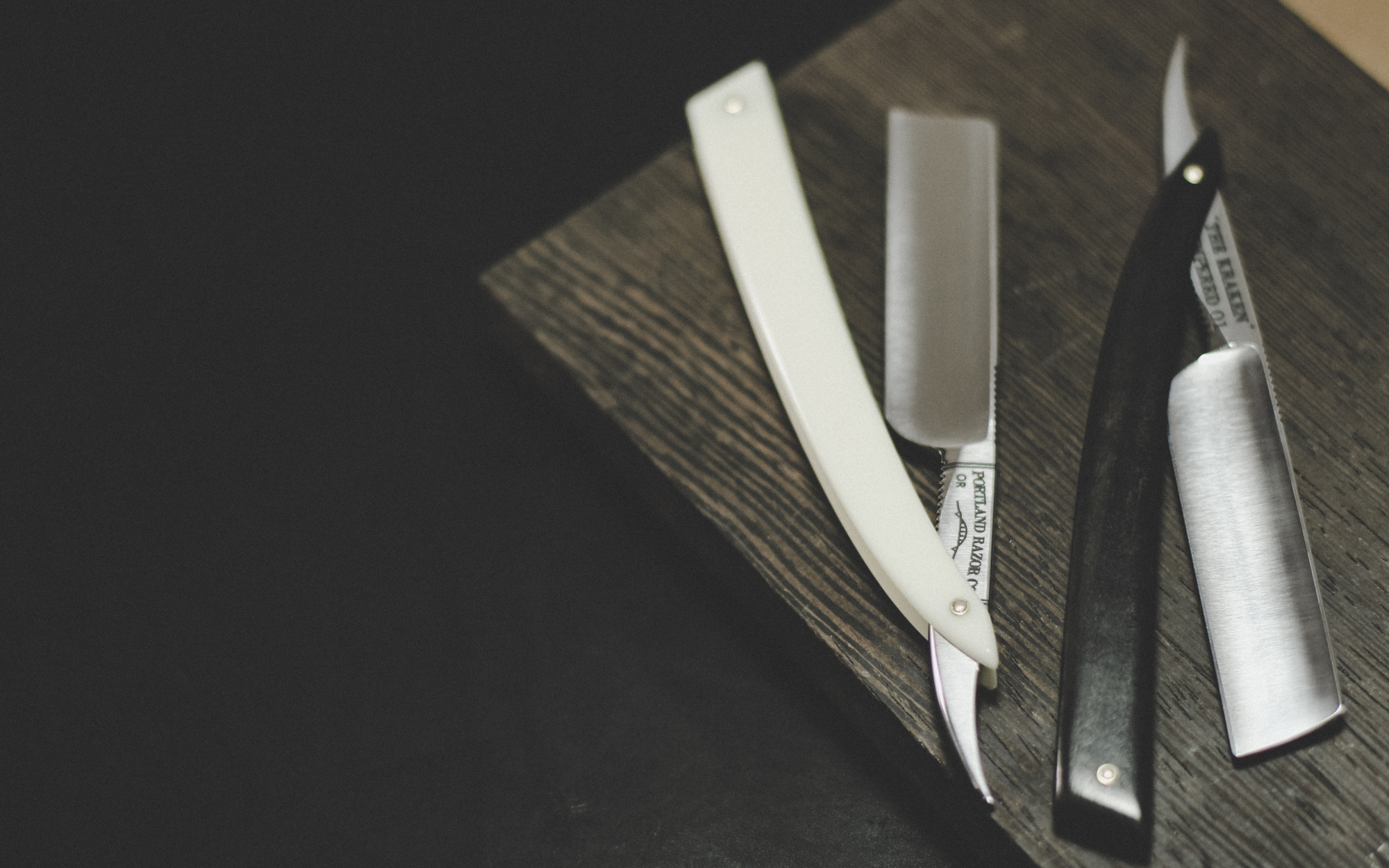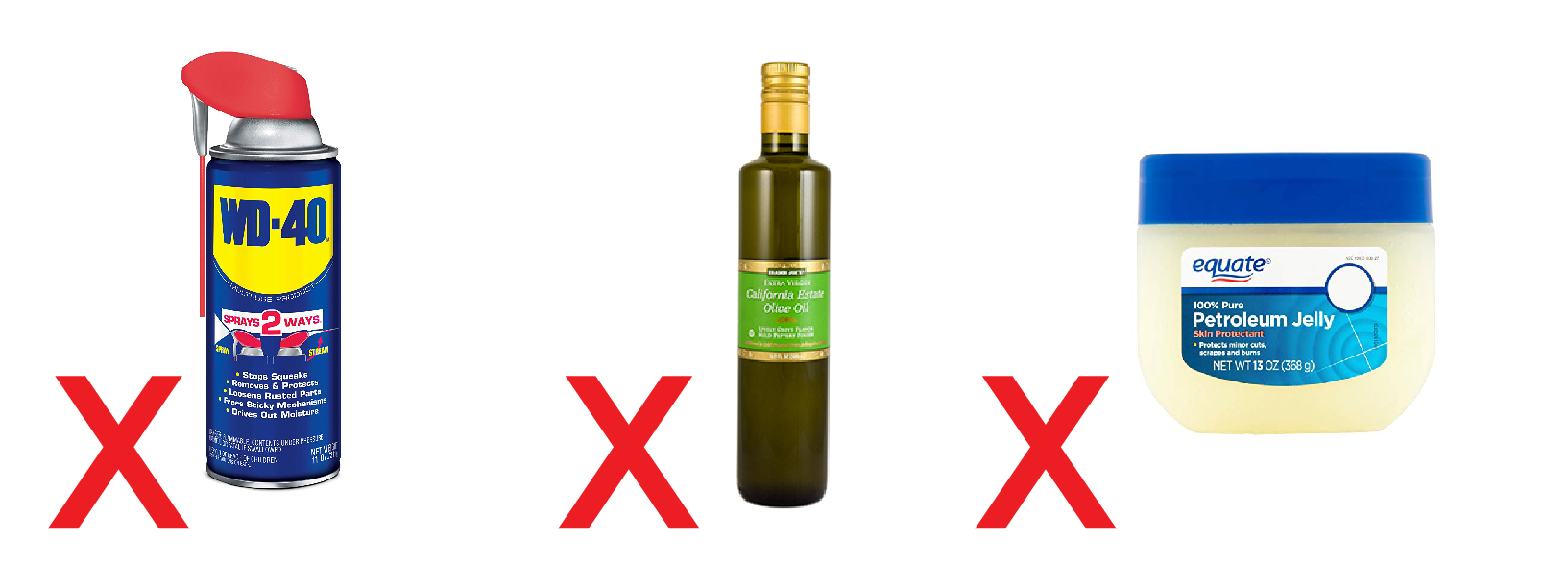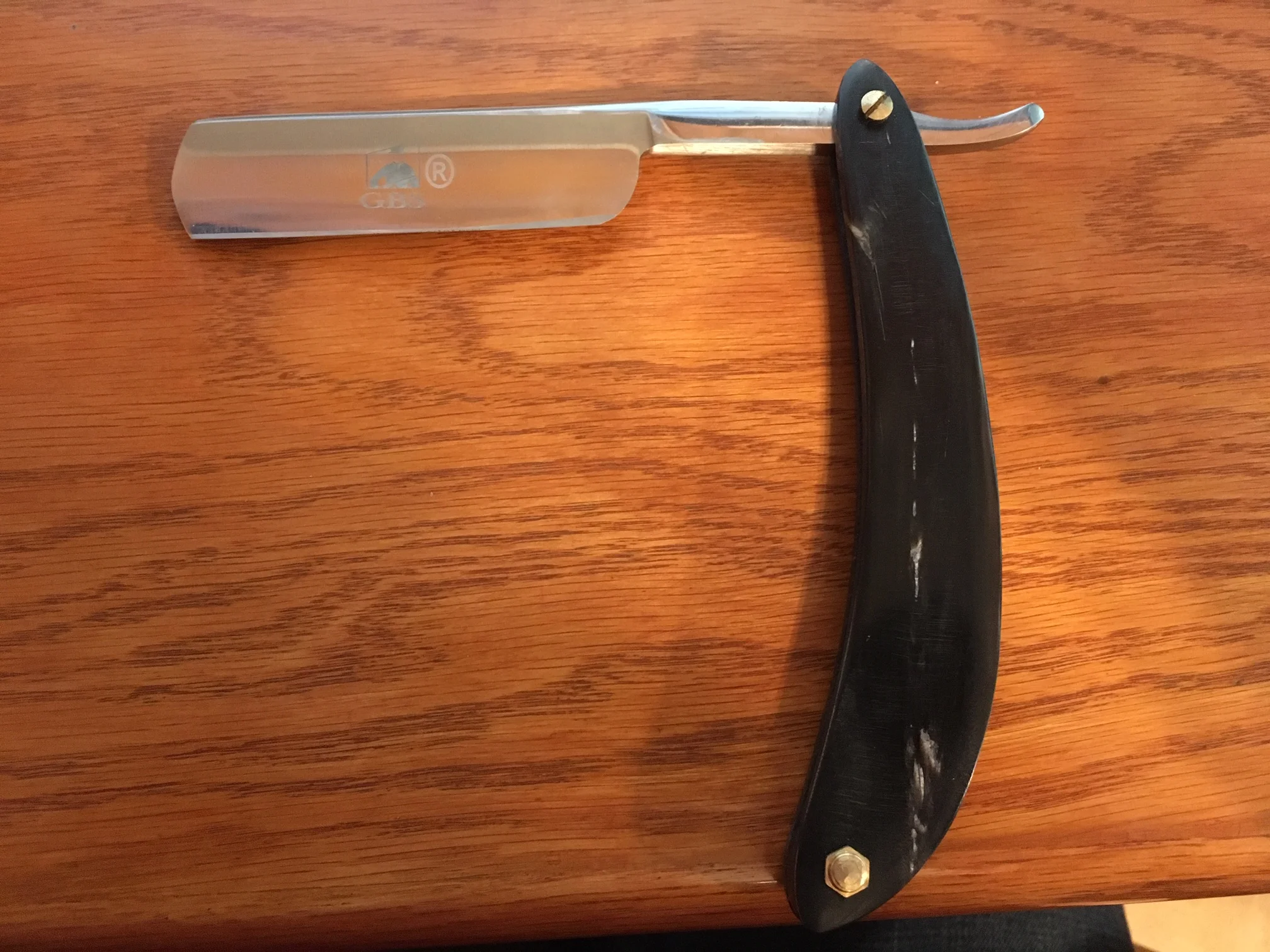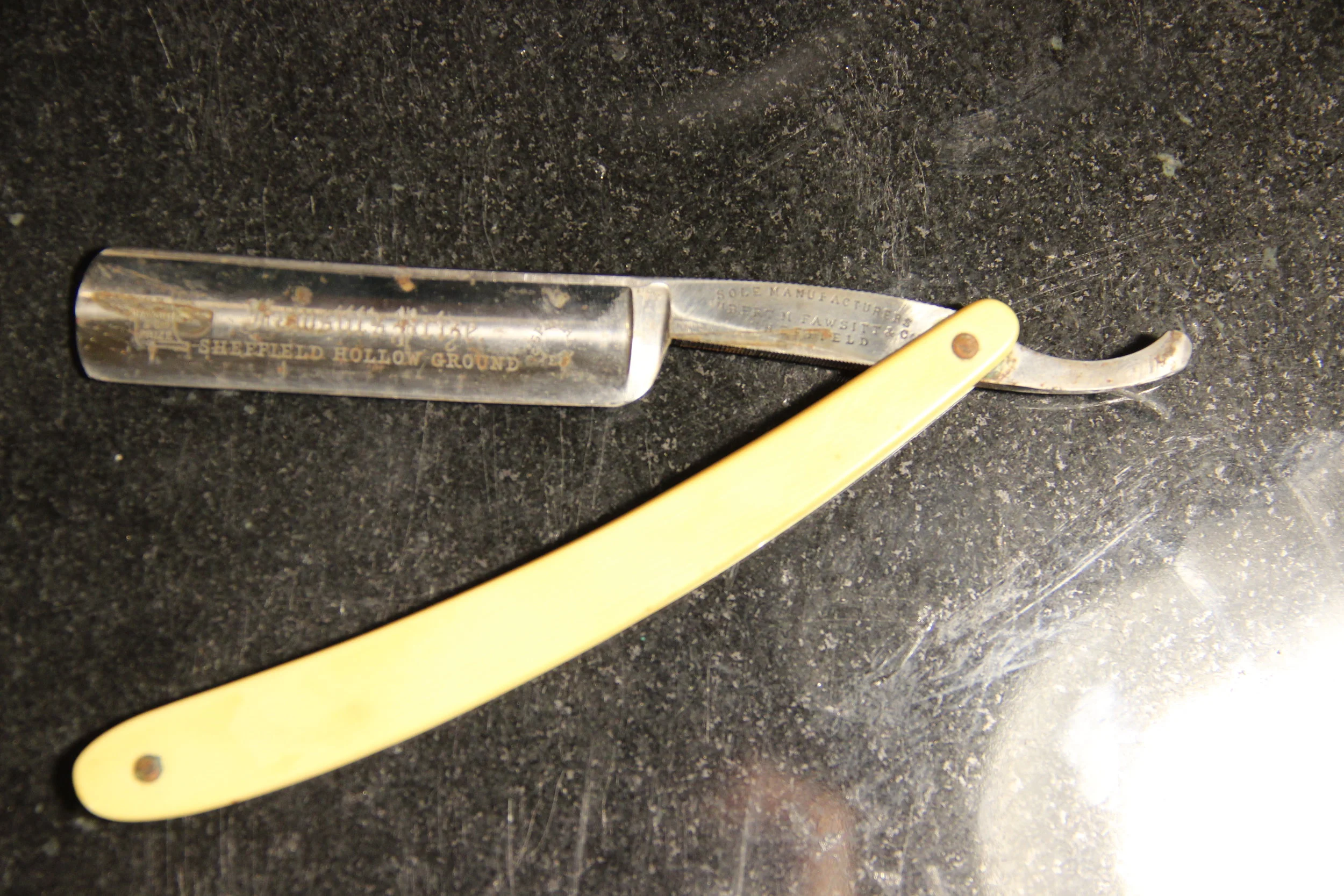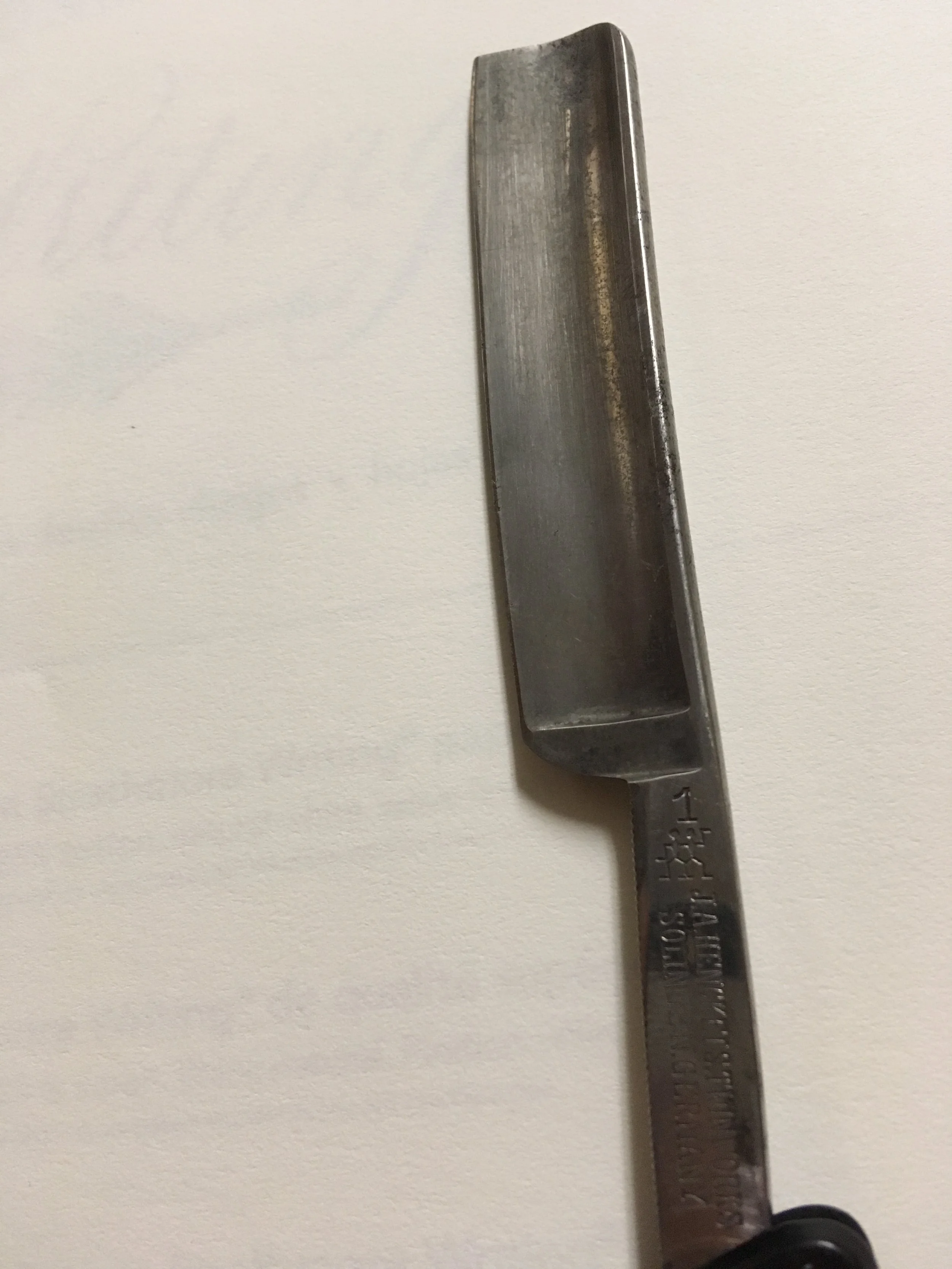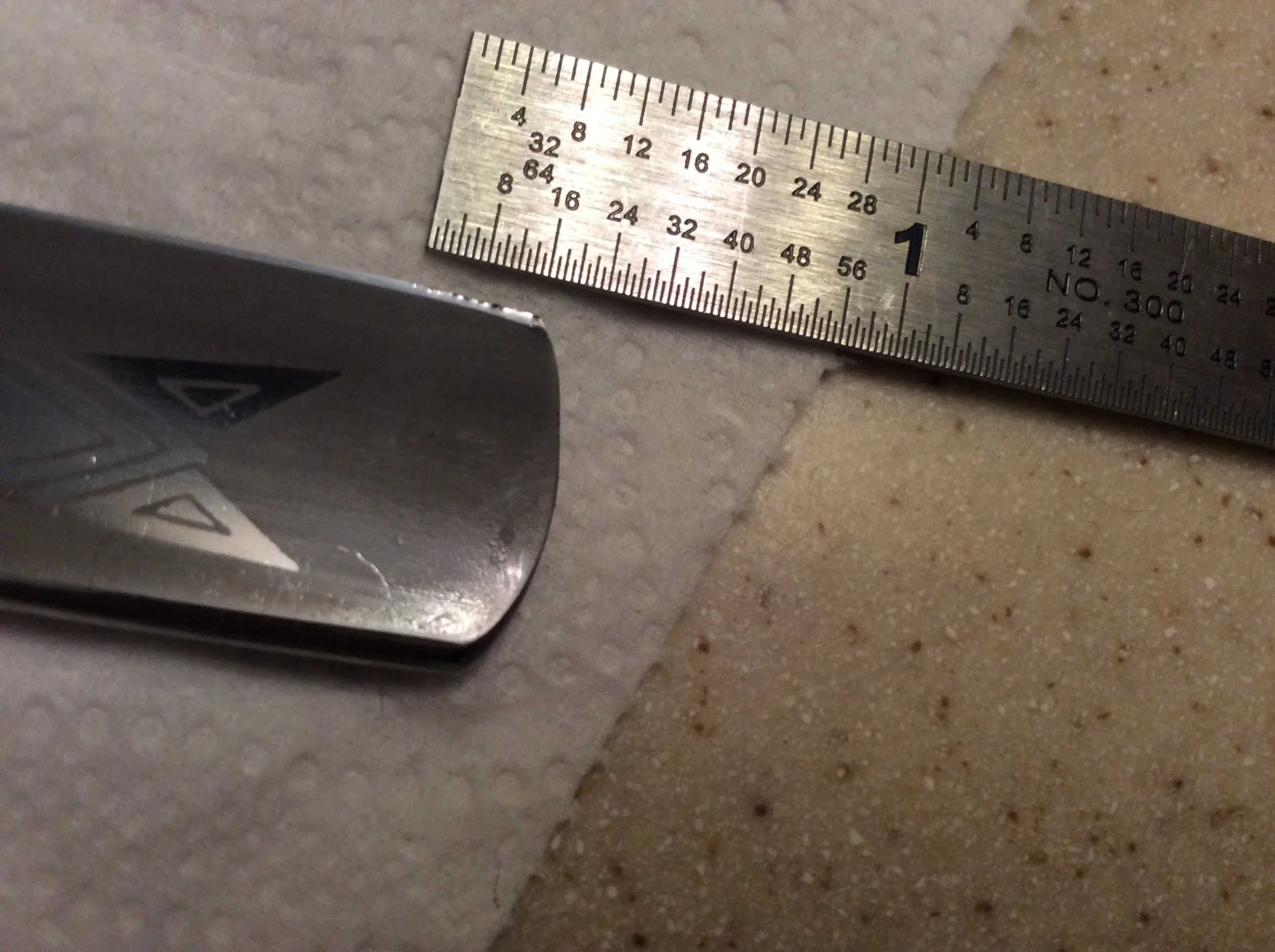In this article, we’ll cover the basic grips used for shaving with a straight razor. This is a starting point for developing your own comfort and style in handling your new razor, and is not an exhaustive list.
Keep our Anatomy of a Straight Razor graphic handy if you need help keeping your tangs and spines sorted.
Safety
Remember that the tang and spine are the safest place to grip the razor. Never hold a razor by the scales! The pivot can always come loose and holding only the scales may cause the razor to swing open or shut unexpectedly. Finally, always close the razor before setting it down. This protects the razor from incidental damage, and nobody needs an open razor blade lying around.
In all of the grips described below, your pressure should be relaxed but firm like a handshake. Keep your wrist straight (straight lines are stable lines) and avoid unnecessary movements. Relax, and initiate movements with your shoulder, following through with the wrist. Do not push or move the razor with your fingers.
1. Basic Grip
This is the starting point for most straight shavers. With the razor’s scales opened 270 degrees and the edge down, grip the tang with two fingers in front of the scales, two behind, and your thumb underneath. This allows you to apply pressure on the tang but also the scales between your fingers, giving maximum control and balance.
2. Pinch Grip
From the basic grip, simply roll the razor between your fingers until the thumb and forefinger pinch the sides of the tang, rather than the top and bottom. This grip is great for upward, against-the-grain strokes on the face.
3. Reverse/Push Grip
Grip the tang with thumb on the spine. This grip is more advanced but is especially useful for barbers shaving other people, and leg shavers. Pushing the blade away from you can be difficult while you build muscle memory, but this will allow you to shave in more comfortable positions and in the direction of hair growth more easily.
Experiment with variations of these grips to suit your hands, razor, and the surface you’re shaving. Remember, this is not an exhaustive list and there is no right way to grip the razor, just whatever works for you! If you’ve tried using a straight razor before, what grips do you find useful? When do you use them? Let us know in the comments below ↓↓↓

